
Animal health company Zoetis (NYSE: ZTS) reported Q1 CY2025 results topping the market’s revenue expectations, with sales up 1.4% year on year to $2.22 billion. The company’s full-year revenue guidance of $9.5 billion at the midpoint came in 1.8% above analysts’ estimates. Its non-GAAP profit of $1.48 per share was 5.8% above analysts’ consensus estimates.
Is now the time to buy Zoetis? Find out by accessing our full research report, it’s free.
Zoetis (ZTS) Q1 CY2025 Highlights:
- Revenue: $2.22 billion vs analyst estimates of $2.19 billion (1.4% year-on-year growth, 1.2% beat)
- Adjusted EPS: $1.48 vs analyst estimates of $1.40 (5.8% beat)
- The company lifted its revenue guidance for the full year to $9.5 billion at the midpoint from $9.3 billion, a 2.2% increase
- Management raised its full-year Adjusted EPS guidance to $6.25 at the midpoint, a 3.3% increase
- Operating Margin: 36.5%, in line with the same quarter last year
- Constant Currency Revenue rose 9% year on year (12% in the same quarter last year)
- Market Capitalization: $70.5 billion
Company Overview
Originally spun off from Pfizer in 2013 as the world's largest pure-play animal health company, Zoetis (NYSE: ZTS) discovers, develops, and sells medicines, vaccines, diagnostic products, and services for pets and livestock animals worldwide.
Sales Growth
A company’s long-term performance is an indicator of its overall quality. Any business can experience short-term success, but top-performing ones enjoy sustained growth for years. Thankfully, Zoetis’s 7.9% annualized revenue growth over the last five years was decent. Its growth was slightly above the average healthcare company and shows its offerings resonate with customers.
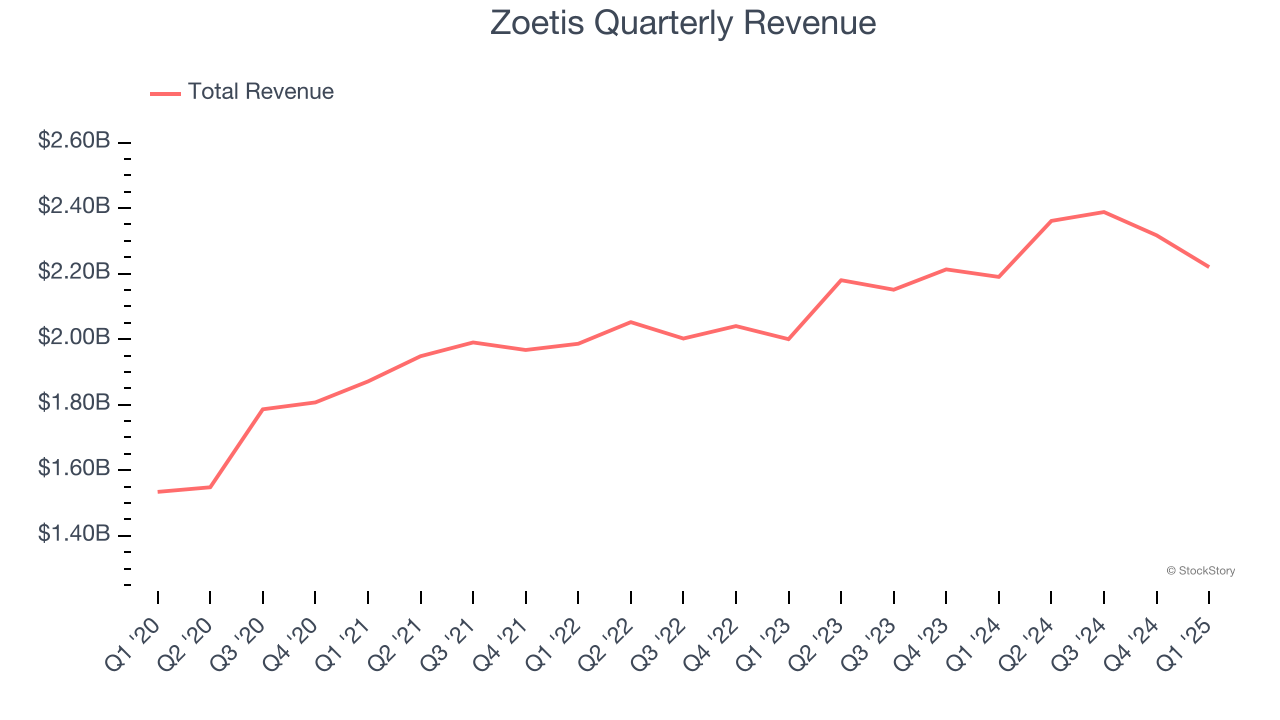
We at StockStory place the most emphasis on long-term growth, but within healthcare, a half-decade historical view may miss recent innovations or disruptive industry trends. Zoetis’s annualized revenue growth of 7.1% over the last two years aligns with its five-year trend, suggesting its demand was consistently weak. 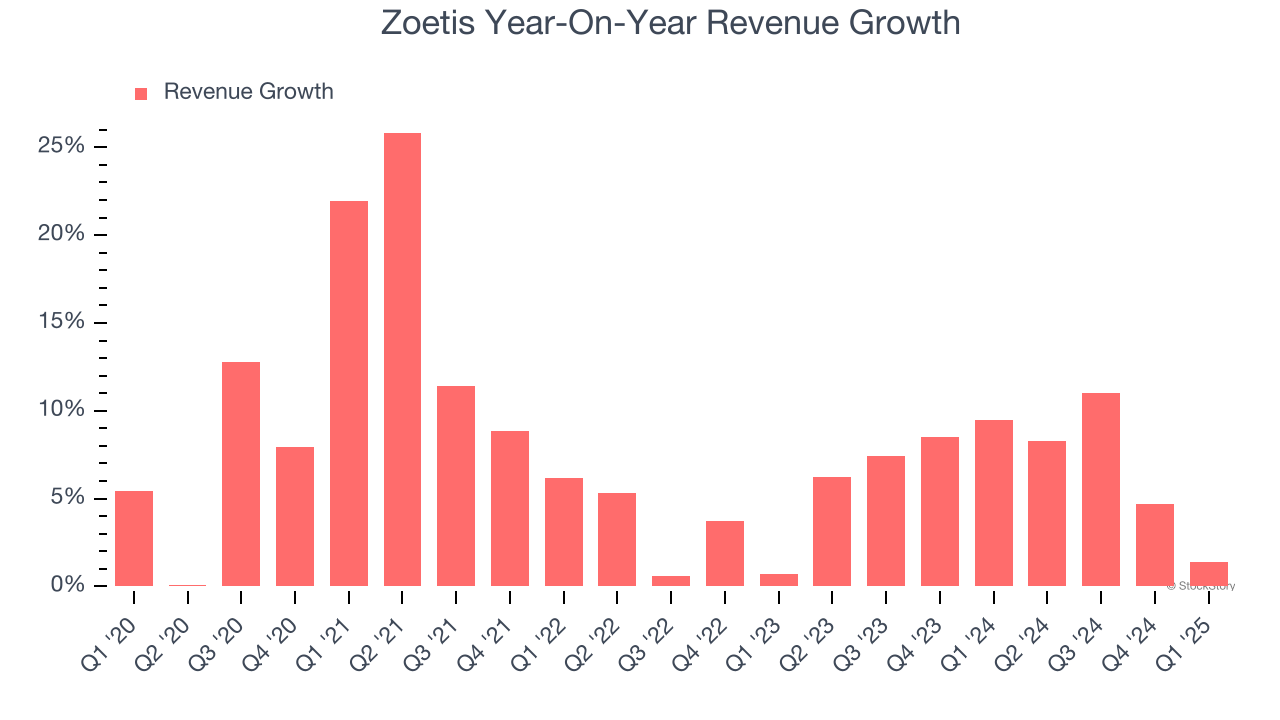
We can better understand the company’s sales dynamics by analyzing its constant currency revenue, which excludes currency movements that are outside their control and not indicative of demand. Over the last two years, its constant currency sales averaged 9.6% year-on-year growth. Because this number is better than its normal revenue growth, we can see that foreign exchange rates have been a headwind for Zoetis. 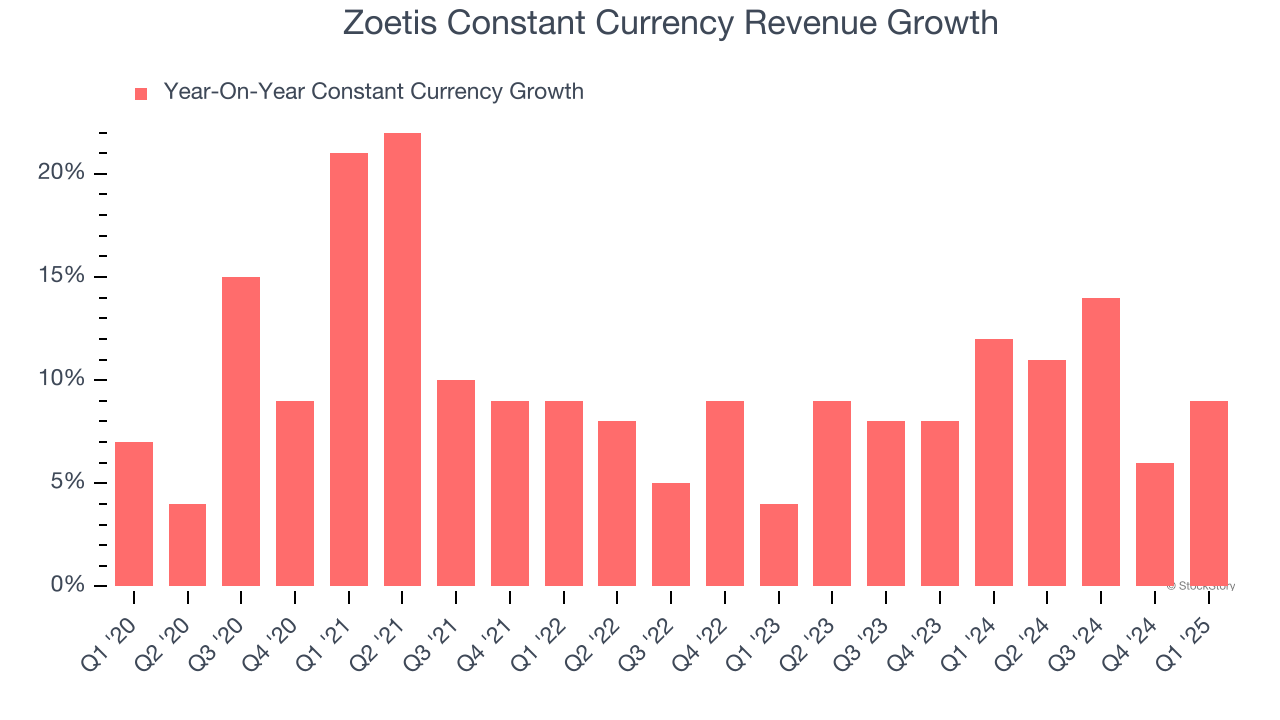
This quarter, Zoetis reported modest year-on-year revenue growth of 1.4% but beat Wall Street’s estimates by 1.2%.
Looking ahead, sell-side analysts expect revenue to grow 1.7% over the next 12 months, a deceleration versus the last two years. This projection doesn't excite us and suggests its products and services will face some demand challenges. At least the company is tracking well in other measures of financial health.
Software is eating the world and there is virtually no industry left that has been untouched by it. That drives increasing demand for tools helping software developers do their jobs, whether it be monitoring critical cloud infrastructure, integrating audio and video functionality, or ensuring smooth content streaming. Click here to access a free report on our 3 favorite stocks to play this generational megatrend.
Operating Margin
Operating margin is one of the best measures of profitability because it tells us how much money a company takes home after subtracting all core expenses, like marketing and R&D.
Zoetis has been a well-oiled machine over the last five years. It demonstrated elite profitability for a healthcare business, boasting an average operating margin of 35.5%.
Analyzing the trend in its profitability, Zoetis’s operating margin rose by 1 percentage points over the last five years, as its sales growth gave it operating leverage. The company’s two-year trajectory shows its performance was mostly driven by its recent improvements. These data points are very encouraging and shows momentum is on its side.
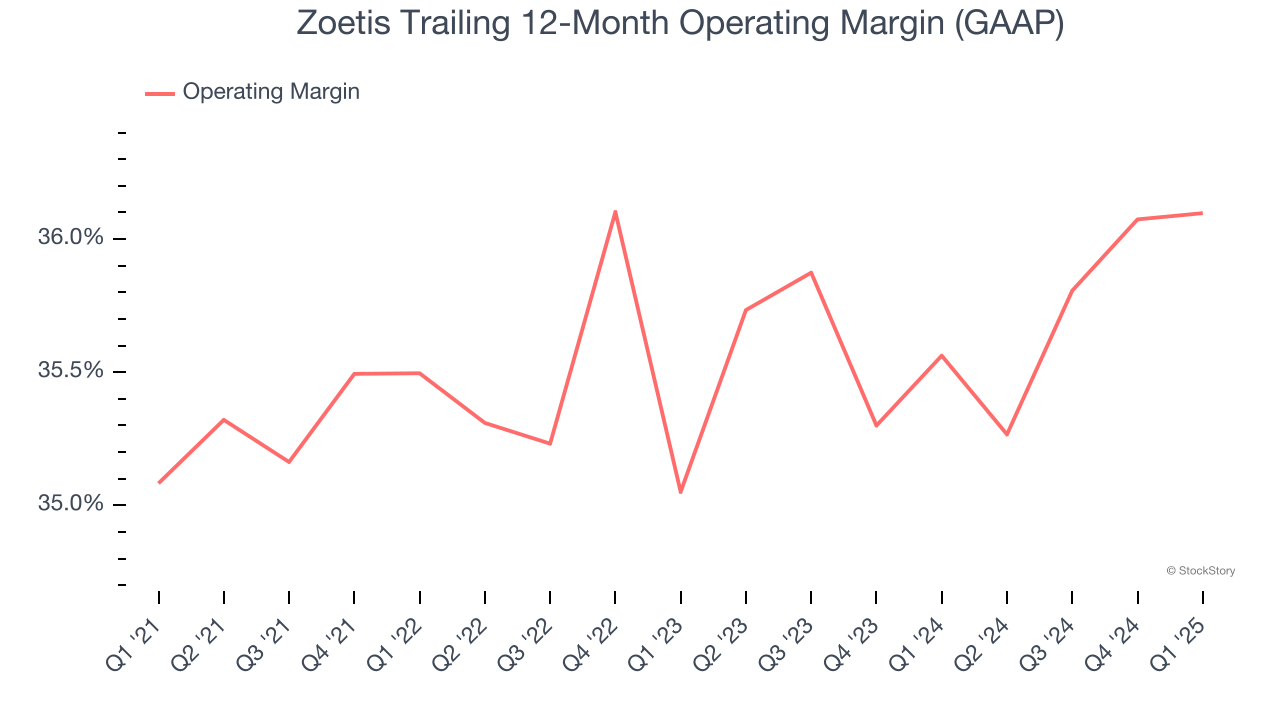
This quarter, Zoetis generated an operating profit margin of 36.5%, in line with the same quarter last year. This indicates the company’s overall cost structure has been relatively stable.
Earnings Per Share
Revenue trends explain a company’s historical growth, but the long-term change in earnings per share (EPS) points to the profitability of that growth – for example, a company could inflate its sales through excessive spending on advertising and promotions.
Zoetis’s EPS grew at a remarkable 10.2% compounded annual growth rate over the last five years, higher than its 7.9% annualized revenue growth. This tells us the company became more profitable on a per-share basis as it expanded.
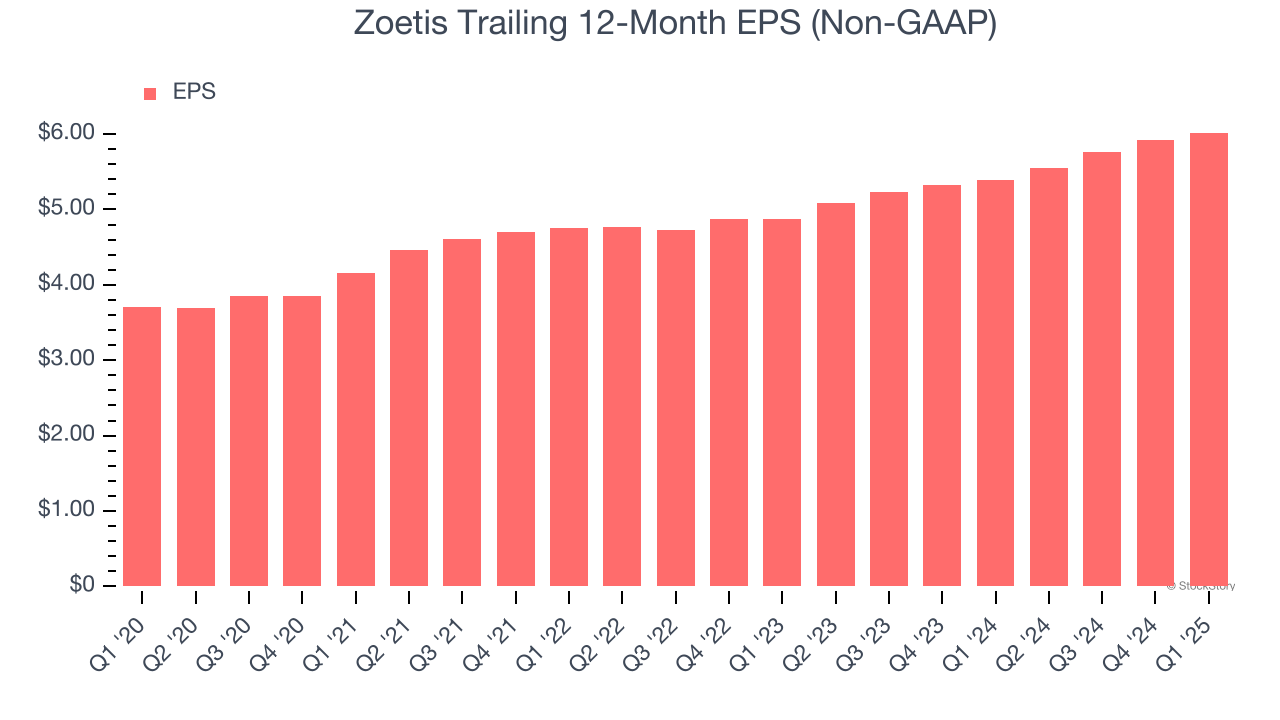
Diving into Zoetis’s quality of earnings can give us a better understanding of its performance. As we mentioned earlier, Zoetis’s operating margin was flat this quarter but expanded by 1 percentage points over the last five years. On top of that, its share count shrank by 6.5%. These are positive signs for shareholders because improving profitability and share buybacks turbocharge EPS growth relative to revenue growth. 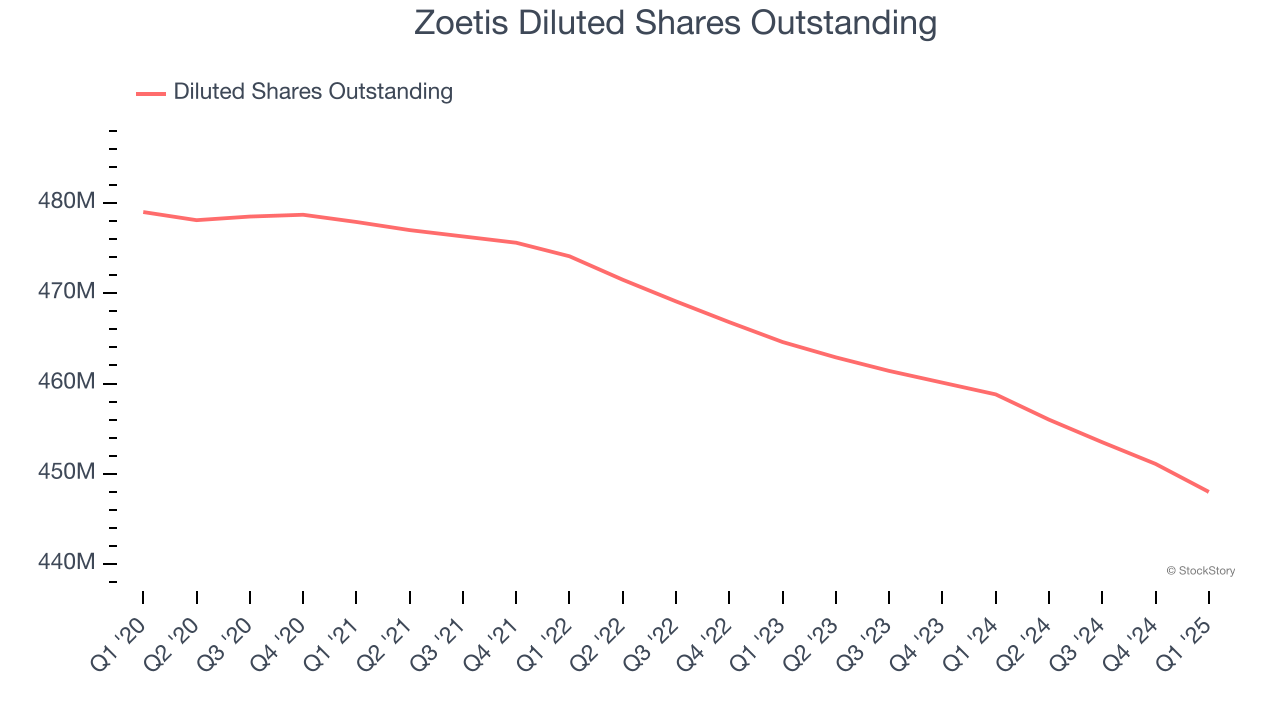
In Q1, Zoetis reported EPS at $1.48, up from $1.38 in the same quarter last year. This print beat analysts’ estimates by 5.8%. Over the next 12 months, Wall Street expects Zoetis’s full-year EPS of $6.02 to grow 2.6%.
Key Takeaways from Zoetis’s Q1 Results
We were impressed by how significantly Zoetis blew past analysts’ constant currency revenue expectations this quarter. We were also glad its full-year EPS guidance outperformed Wall Street’s estimates. Zooming out, we think this was a solid print. The stock traded up 1.4% to $160.49 immediately after reporting.
Sure, Zoetis had a solid quarter, but if we look at the bigger picture, is this stock a buy? The latest quarter does matter, but not nearly as much as longer-term fundamentals and valuation, when deciding if the stock is a buy. We cover that in our actionable full research report which you can read here, it’s free.







